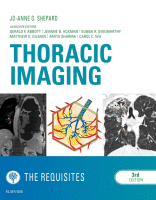Physical Address
304 North Cardinal St.
Dorchester Center, MA 02124

Introduction Infection with the human immunodeficiency virus (HIV) that causes the acquired immunodeficiency syndrome (AIDS) has been and continues to be a serious health threat around the globe. Despite great advances in the treatment of HIV/AIDS, such as the aggressive…

Introduction Pneumonia is an important cause of morbidity and mortality, with tremendous variability in its clinical and imaging manifestations, treatment, and outcomes. Many individuals with mild pneumonias never come to medical attention, but other patients ultimately succumb to infections that…

Introduction In the United States, 25% of trauma-related deaths are secondary to thoracic injuries, which can result from either penetrating trauma or blunt trauma. Penetrating chest trauma is less frequent but deadlier than blunt chest trauma and commonly results from…

Introduction For optimal interpretation of imaging studies done after thoracic surgery, it is essential to understand the surgical techniques and the possible complications. The common surgical procedures that are performed in the lung, pleura, mediastinum, and chest wall are discussed…

Pulmonary Embolus Pulmonary embolus (PE) is a common clinical problem with an annual incidence of 4 to 21 per 10,000 people per year, rising significantly to 1 in 100 patients after 80 years of age. Autopsy studies have shown that…

Introduction Thoracic imaging plays a vital role in the management of intensive care unit (ICU) patients. The chest radiograph provides critical information regarding placement of life support devices, complications such as barotrauma, intravascular volume status, and a wide spectrum of…

Introduction Chest radiography serves a vital role in the management of critical care patients. Most patients in the intensive care unit (ICU) have at least one and frequently more than one device for central venous access, mechanical ventilation, hemodynamic monitoring,…

Introduction Several congenital abnormalities of the thorax have been described, but most are rare. Classification of these anomalies is difficult because the embryologic basis often is not clearly understood. A classification based on anatomic structures uses the categories of trachea,…

Pleura Anatomy and Physiology The pleura is composed of two thin layers of mesothelium referred to as the visceral and parietal pleura. The visceral pleura covers the lung and fissural surfaces and the parietal pleura lines the mediastinum, ribs, and…

Normal Anatomy Trachea The trachea is a tubular structure that extends from the cricoid cartilage superiorly to the carina inferiorly and is purely gas conducting. It is typically cylindrical in shape with slight flattening along its posterior aspect. The trachea…